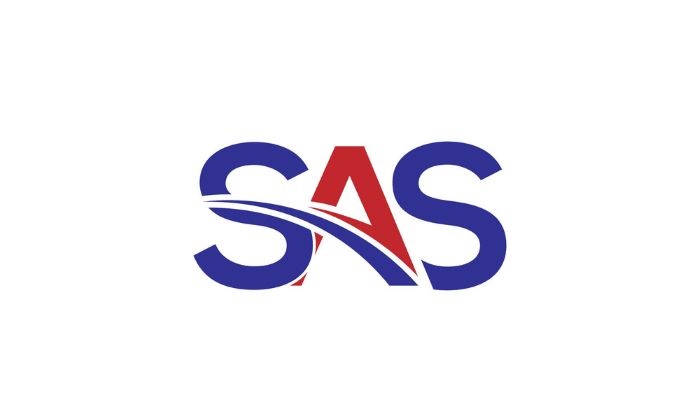Technology
79% Of Risk Pros Prioritize Credit Risk Transformation In Race To Digitalize Banking

Regulatory demands, calls for greater transparency and accessibility, plus customers jumping ship to more agile fintech counterparts – banks are feeling pressured to enact a digital revolution, according to risk professionals on the ground. A key pillar of this modernization, credit risk transformation, is the focus of a new risk technology study by the Global Association of Risk Professionals (GARP) and analytics leader SAS.
The Value of Credit Risk Transformations and the Role of AI is based on a global survey of roughly 300 banking sector risk practitioners. The study reveals that credit risk transformation (CRT) is an utmost priority for banks in the race to redefine themselves and secure a competitive edge. The speed, scope and objectives risk professionals are seeing in CRT defied industry precedent – and survey researcher’s expectations.
- Essential evolution. 79% of credit risk pros placed medium to high priority on CRT compared to other organizational transformations within banking.
- Top speed, top priority. More than half (55%) anticipate their institution will complete their transformations within two years – an accelerated pace the report describes as “…surprising for traditionally pragmatic and cautious banks when pursuing projects core to their business.”
- Faster, smarter decisions. Almost three-quarters (72%) identified optimizing credit decisioning as their main CRT business objective.
“When it comes to accomplishing credit risk transformation, there seems to be an element of rebuilding the plane in flight,” said Troy Haines, Senior Vice President and Head of Risk Research and Quantitative Solutions at SAS. “Risk practitioners know that digitalization requires a rich understanding of advanced analytics and how to integrate them into existing operations, but successful realization can take time. That traditionally ROI-focused banks are working to achieve credit risk transformation at breakneck speed as a vital business objective shows how critical credit risk measurement and active credit portfolio management are to financial institutions’ survival.”
Building a smarter, “phygital” future with analytics
Fulfilling the promise of digitalization in the wake of COVID-19 is key for innumerable sectors, and banking is no exception. However, unlike many industries, 52% of the surveyed risk professionals foresee a truly “phygital” landscape for banking: one with virtual and real-life touchpoints for consumers.
Sophisticated analytics, machine learning and automation will be paramount to constructing the future of banking, providing actionable insights and data upon which this “phygital” world will run. Despite this inevitability, surveyed risk professionals signaled that their organizations haven’t yet overcome the learning curve in applying these technologies on their CRT journeys. When asked about the most challenging areas of transformation, risk pros identified the top three as:
- Advanced analytics, including artificial intelligence and machine learning (48%).
- Automation and streamlining of processes (47%).
- Better customer data management (45%).
“It’s clear that banks have made significant progress in their CRT efforts,” said Christopher Donohue, Managing Director of the GARP Benchmarking Initiative. “However, we’ve found there is still much work to be done regarding the integration of AI and machine learning, the improvement of customer data management and the optimization of credit decision-making.”
Notably, the study revealed that more than half of surveyed organizations are already using AI and machine learning or will start using them within 12 months. According to survey respondents, these technologies are currently used most often for processing automation (62%), refinement (58%) and credit scoring (58%).
“Understanding and effectively applying advanced analytics is essential to banks realizing the full potential of credit risk transformations,” said Zeynep Salman, Head of Risk Decisioning for EMEA at SAS. “As risk practitioners advance their organizational transformations, the technologies that present as stumbling blocks now will become building blocks to a faster, smarter and more accessible future for banks and consumers.”
Learn more about the value of CRT and the role of AI
Read the full GARP survey report at SAS.com/CRTsurvey, and enrich your understanding of the scope and challenges inherent in credit risk transformation by viewing the complementary on-demand GARP webinar.
About GARP
The Global Association of Risk Professionals is a non-partisan, not-for-profit membership organization focused on elevating the practice of risk management. GARP offers the leading global certification for risk managers in the Financial Risk Manager (FRM®), as well as the Sustainability and Climate Risk (SCR®) Certificate and ongoing educational opportunities through Continuing Professional Development. Through the GARP Benchmarking Initiative and GARP Risk Institute, GARP sponsors research in risk management and promotes collaboration among practitioners, academics, and regulators.
Founded in 1996, governed by a Board of Trustees, GARP is headquartered in Jersey City, N.J., with offices in London, Beijing, and Hong Kong. Find more information on garp.org.
About SAS
SAS is the leader in analytics. Through innovative software and services, SAS empowers and inspires customers around the world to transform data into intelligence. SAS gives you THE POWER TO KNOW®.
Source – SAS
-
Auto2 years ago
Honda Marine Debuts All-New BF350 Outboard Company’s First V8 Motor Available Commercially, Flagship Model Offers Premium Power and Unparalleled Performance for Extraordinary Boating Experiences
-
Auto2 years ago
New Features Further Increase Desirability Of Bentayga Range
-
Technology2 years ago
Oracle Partners with TELMEX-Triara to Become the Only Hyperscaler with Two Cloud Regions in Mexico
-
Auto2 years ago
Honda and Acura Electric Vehicles Will Have Access to Largest EV Charging Networks in North America Aided by New Agreements with EVgo and Electrify America
-
Lifestyle2 years ago
2023 Nike World Basketball Festival Brings the Best of Basketball Style, Culture and Community